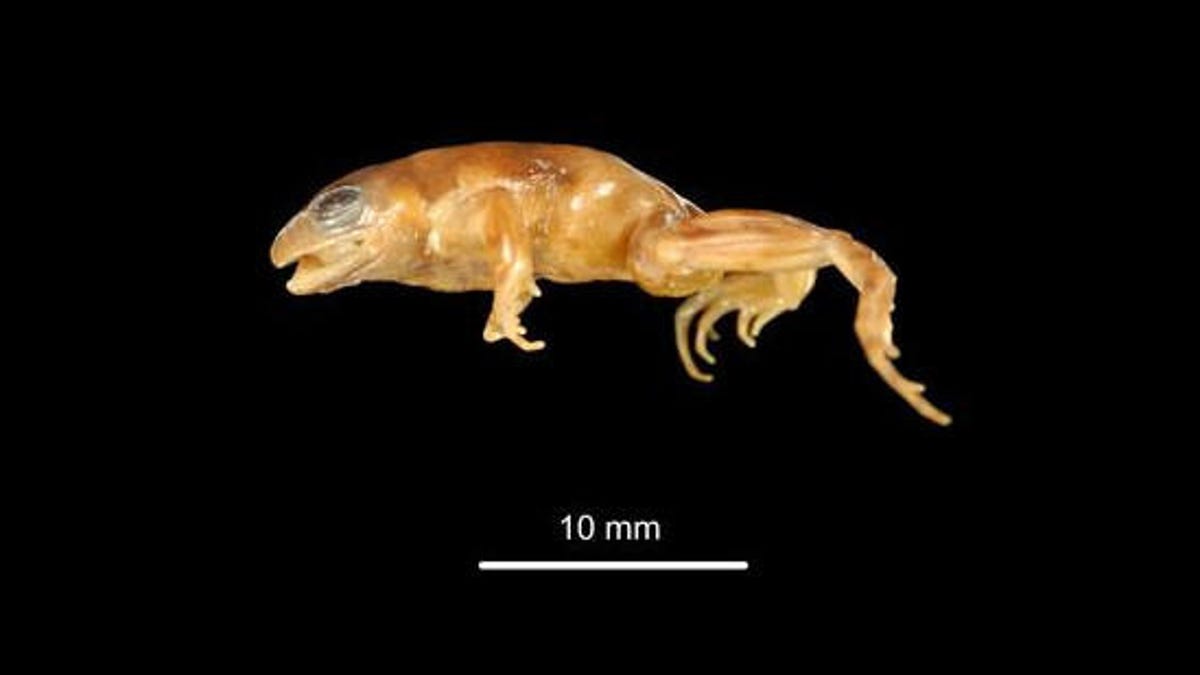Citizen scientists document rarely seen, tiny 'froglet' with smartphone app
A ribbeting use of technology uncovers a rare, tiny amphibian.

The Sloane's froglet is just over an inch long and rarely spotted in the wild.
The smartphone in your pocket is a powerful tool that connects you with the world. You use it everyday to talk to friends, read emails, jump into Twitter beefs and if we're lucky, browse CNET.com -- a great website.
What you probably didn't know is that your smartphone is also an incredibly powerful tool to connect you to species of frogs rarely seen in the wild. Researchers at the Australian Museum, in partnership with IBM, developed an app known as FrogID which allows citizen scientists to record the calls of wild frogs, providing valuable data on their distribution and populations.
The app was released for both iOS and Android devices in November 2017 and allows users to upload frog calls which they can compare with calls in an existing database. Once they identify the call and send it in, the Australian Museum's team of experts weigh in and validate the calls. In the first year of use, citizen scientists logged calls of over 66,000 frogs and have uncovered evidence of some of the rarest, most threatened frog species.
The findings from the first year were published in the journal Herpetological Conservation and Biology on April 30 and demonstrate both the power of the smartphone app and citizen science projects in documenting biodiversity. Their findings also highlight one particular species of miniature frog that has only been documented twice in the past six years, according to the Atlas of Living Australia, which aggregates and records biodiversity data.
It goes by the uber-cute moniker of "Sloane's froglet"
This particular species is only found in a small region of eastern Australia and was last observed in July 2016. But the power of citizen science and FrogID identified the Sloane's froglet by its "chick chick chick chick" call 292 times between November 2017 and November 2018, giving researchers a better snapshot of its distribution and population.
"The FrogID data on species that are poorly known, threatened or rarely documented has been a real success of the project, increasing our ability to make data-driven decisions for these rare species," said Jodi Rowley, lead author on the study, in a press release.
Other rarely spotted frogs include the Small Toadlet, which was recorded 10 times, and the Black Mountains Boulder Frog, a vulnerable species that was recorded three times.
The app also powered an extensive analysis of Australia's invasive cane toad population, which has decimated local flora and fauna since introduction in the early 1900s. Plans are underway to genetically modify those toads and FrogID provides a way to map and survey their movements across the country.
The researchers also believe FrogID data may enable identification of new frog species in the future.
Originally published May 1
Updated May 2: Adds second confirmed sighting of froglet in ALA records.

